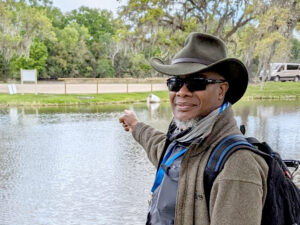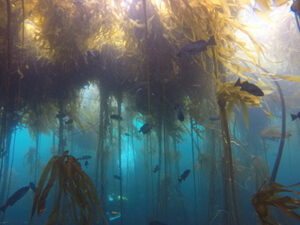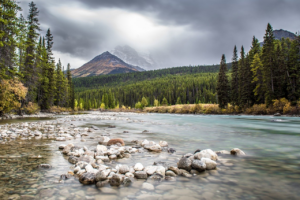
Taking the Pulse of Earth
Applying AI to Earth data—including Landsat—helps terraPulse reveal sustainable options for farming, reforestation, and land management.

Applying AI to Earth data—including Landsat—helps terraPulse reveal sustainable options for farming, reforestation, and land management.

Washington-Allen is a longtime Landsat data user working towards drylands restoration and sustainability solutions.

The world has lost 561 square miles (1,453 square kilometers) of salt marshes over the past 20 years.

New research uses Landsat observations and advanced computing to chronicle wetlands lost (and found) around the globe.

Nestled in the science-based information that park rangers share with visitors to Glacier Bay National Park and Preserve are insights from Landsat satellites and NASA climate scientists.

Scientists from NASA’s Goddard Space Flight Center and the University of Maryland, College Park, investigated how the acoustics of a forest can be a cost-effective indicator of its health—and Landsat allowed them to see back in time.

Landsat has shown that wildfires and climbing temperatures have caused a 6.7 percent decline in California tree cover since 1985.

The Jane Goodall Institute (JGI) uses satellite observations, including data from the NASA and USGS Landsat satellite series, in their efforts to work in partnership with local residents to understand and protect chimpanzee habitats.

Landsat allows herders to monitor vast expanses of desert in a way traditional field monitoring can’t support.

An analysis of over a million Landsat images has revealed that 4,000 square kilometres of tidal wetlands have been lost globally over twenty years.

The Landsat-informed kelpwatch.org hosts the world’s largest open-source dynamic map of kelp forest canopy.

Using decades of Landsat satellite imagery, scientists at Geoscience Australia have mapped annual shoreline locations for the entirety of Australia going back more than thirty years.

Fine-tuning remote sensing to protect forests from the spread of dangerous critters.

The recent increase of Sphagnum mosses over portions of the northern peatlands known as wet aapa mires can be detected from Landsat satellite data.

Remote sensing measurements using Landsat can help assess the effectiveness of various restoration interventions.

A new analysis of protected forests worldwide finds that protected forests are unlikely to be cut down when they are surrounded by intact forests.

California’s blue oak woodlands have decreased by more than 1,200 square kilometers.

Landsat data stretching back 40 years show that vegetation loss is most stark in desert ecosystems already on edge of habitability.

More than two decades worth of Landsat satellite imagery was used to quantify how beetle outbreaks have impacted high-elevations forests in Colorado, southern Wyoming, and northern New Mexico.

The Liberian government, with the help of NASA and Conservation International, is using Landsat and GEDI data to estimate the country’s natural capital.

Most of Northern California’s kelp forest ecosystem is gone, replaced by widespread ‘urchin barrens’ that may persist long into the future, according to a new study.

Vegetation cover along the Kuiseb River in the Namib Desert has increased over the last 35 years, Landsat has helped show.

Using Landsat to keep an eye on the trees offers an effective way to monitor groundwater along river corridors in the Southwest.

By Morgan Spehar, NASA’s Goddard Space Flight Center The Yuma Ridgway’s rail, a chicken-sized bird that looks like a cross between a duck and a crane,

Earth observations and citizen science are informing a program called BirdReturns to help restore lost natural wetlands.

Scientists are combining data from water samples containing fish DNA with satellite data to find native fish and identify their habitats.

Using satellite images to track global tundra ecosystems over decades, a new study found the region has become greener, as warmer air and soil temperatures lead to increased plant growth.

A new study reports a net increase of 5.38 petagrams of forest biomass between 1984 and 2016; carbon-wise, that is equivalent to a train of loaded coal cars long enough to wrap itself around Earth nearly 34 times.

Satellite images are helping to reveal how COVID-19 lockdown measures are impacting food security, urban surface heat, water quality and aquatic ecosystems, and more in NASA-funded studies.

Landsat and ICESat-2 satellite data have made it possible for scientists to develop maps showing the “quality” of tropical forests.

Using Landsat, researchers have created the first map of the causes of change in global mangrove habitats between 2000 and 2016—a valuable tool to aid conservation efforts for these vital coastline defenders.

LANDFIRE has released its Remap dataset; new techniques and new data provide significant improvement.

Goldberg will launch Cloud to Classroom, an innovative project that uses satellite imagery to help K-12 classrooms understand global environmental change through remote sensing.
NASA Official: Chris Neigh
Webmaster: Michael P. Taylor
Curators: Landsat Science and
—–